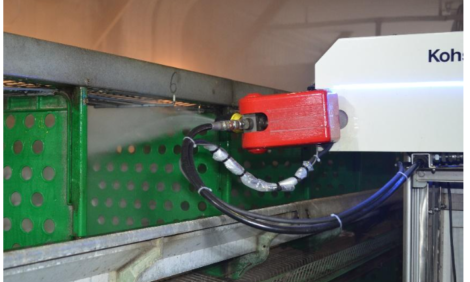



On-Farm Euthanasia of Spent Layer Hens
An Australian study is examining euthanasia as a practical and humane alternative to the usual practice of depopulating layer houses by catching crews and transporting the birds to the processing plant, reports Byron Stein, editor of 'The Drumstick' for New South Wales Department of Primary Industries.Drs Peter Scott and Arif Anwar from animal and avian health consultancy, Scolexia, are working with Dr Angus Crossan from AECL on Poultry CRC project, 'Development and Extension of Industry Best Practice for On-Farm Euthanasia of Spent Layer Hens'.
As Dr Scott explained: "The initial need of the Australian layer industry to consider on-farm mass euthanasia of spent layer hens resulted from the closure of some spent hen layer processing plants. This was in part due to the uneconomical nature of hen meat production and the costs that processors had to charge producers in order to remain viable. The distance from processing plants has also become a factor over time, particularly with the introduction of the Land Transport of Poultry code, not allowing for greater than 24 hours cartage of birds."
Layer farms rely on optimised shed occupancy and utilisation for profitability, thus farm depopulation is coordinated with the placement of the next batch of point-of-lay pullets. This is nominally a two- to three-week turn-around, allowing adequate time for clean-out and disinfection. Any disruption to the timing of this planning is costly, creates operational difficulties and affects egg flows. This is a significant issue for farmers who use off-farm spent hen processing plants, as these plants are limited in their capacity resulting in logistical difficulties.
Many farmers turned to on-farm euthanasia of spent layer hens using carbon dioxide (CO2), portable bins and their own protocols.
As Dr Scott said: "What was immediately identified by producers was that the actual operational costs of an on-farm depopulation using carbon dioxide were not only less than using the traditional method of collection from farm for processing but significantly more flexible. Using pre-planned crews and dead bird collection vehicles, entire sheds could be depopulated in a morning rather than dispersed over two to three days when being picked up for processing. This resulted in a significant saving in labour costs and improved the strategic use of labour. More importantly, the depopulation could be done at a time selected and logistically preferred by the layer producer."
The major benefit from the Poultry CRC project will be a manual for egg farmers describing standardised procedures for on-farm euthanasia. This will ensure that there is consistency throughout the industry, with best practice principals firmly embedded. It will also give confidence to the wider community that procedures are humane and in line with current best practice.
“Initial research has identified that there is a real need for prescriptive parameters to be included in exiting protocols, improved handling methodologies and formalised training of the operators at all levels," said Dr Scott. “To achieve the optimal parameters, such as the carbon dioxide concentration range as a percentage of air at which the bird becomes rapidly unconscious and insensible, has necessitated the use of specialised equipment that can log carbon dioxide concentration throughout the entire euthanasia process."
There are a number of additional issues requiring further studies, which include the ideal bin design for containment, euthanasia and removal of birds, and methods to control the freezing of the gas lines and cylinders.
The on-farm euthanasia of spent layers should, after the completion and implementation of this project, provide an expedient and humane alternative to depopulation of layer sheds by catching and cartage of birds to off-farm processing plants.
This article was first published in 'The Drumstick'.
October 2013









